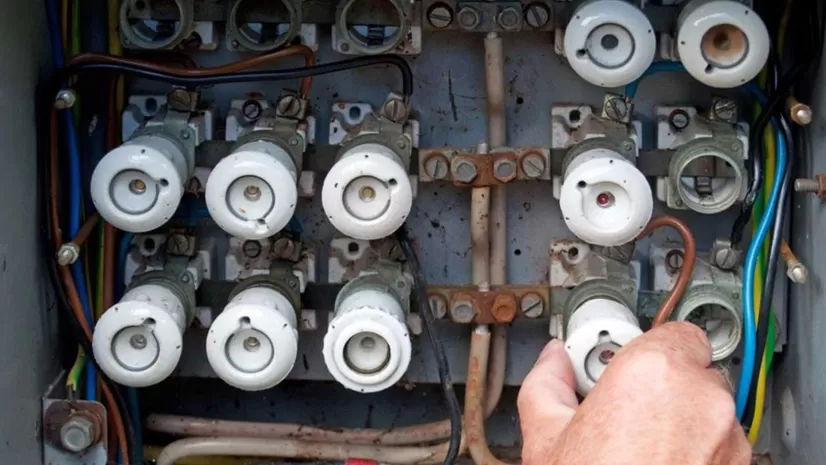Jun 28, 2022

What is knob and tube wiring? While it might sound like a bad 1990s indie band, it’s actually an outdated electrical system that’s still found in many old homes in the United States.
Often abbreviated as K&T, this early standard—widespread in residences built from the 1880s to the 1930s—is often considered a hazard today, depending on how it was installed. So if a home you’re hoping to buy has it, you’ll want to have it examined closely and possibly replaced. Why? Here’s everything you never knew you needed to know about ye olde knob and tube.
What is knob and tube wiring?
Knob and tube wiring gets its name from the white ceramic “knobs” and black “tubes” that encase the copper wiring carrying electricity as it winds through the house. Even though the rest of a home may have updated its wiring at some point, knob and tube often still lingers in hard-to-access pockets like attics, wall cavities, and crawl spaces.
One big difference between knob and tube and today’s wiring is that this system lacks a ground wire—that extra wire that runs deep into the earth. This is an important safety feature, since if something goes haywire in a home, the ground wire offers a path to offload the excess electricity. And that’s a very good thing.
Layperson translation: The lack of a ground wire in knob and tube wiring increases the chances that you’ll start a fire if you overload those circuits.
“The good news is that a properly installed K&T wiring system was in large part safe—if not overloaded,” explains David Outlaw, operations manager at Onvico Inc., a general contracting and engineering firm based in Thomasville, GA. “The bad news is that there aren’t many buildings today that work with K&T wiring.”
Another quirky feature of K&T? “Wire insulation from that era was asphalt-saturated cotton cloth or rubber, both of which degrade over time,” Outlaw adds.
All in all, “Knob and tube wiring is not the safest or most effective option for modern-day homes,” says Angie Hicks, co-founder of Angie’s List. This outdated wiring system “was never expected to carry the power loads that most modern-day homes produce.”
Should I avoid buying a home with knob and tube wiring?
Not necessarily. But you do need to proceed with caution. Get a home inspection so you’re clear on the extent of the wiring and its quality.
Furthermore, know this: “Most home insurance companies refuse to insure or renew policies on houses with knob and tube,” Hicks warns. And the ones that will often require that you provide an official letter describing the condition of the system after an in-depth inspection.
Plus, “If the house is able to be insured,” Hicks adds, “the policy will cost significantly more than a house with a newer wiring system intact.”
So all in all, check with your home insurance company before you submit your offer. And, adds Hicks, “be sure to include the cost of this upgrade in your budget as you think about the total cost of ownership, and negotiate with the seller accordingly.”
How much does knob and tube wiring cost to replace?
As you may have guessed if you’ve ever had any electrical work done in your home, a lot.
“Depending on the size of your home, this is a project that could cost $8,000 to $15,000,” Hicks says.
True, there’s no code that mandates the complete removal of knob-and-tube wiring, but experts generally suggest removing as much as possible.
Luckily, there are a few ways to keep the costs down. For instance, if you’re already planning a big remodel, replace the knob and tube wiring while your wall cavities are already exposed. You can also divide this time-intensive project into bite-sized pieces, suggests Hicks. “Start by rewiring the kitchen and then move on to the attic or family room,” she says.
And if you’re making a home investment of this level? “Don’t cheap out,” advises Outlaw. “Address your wish list for outlets, lights, and switches.”
One way you should not try to keep costs down is by replacing this wiring by yourself.
“This is not a project to DIY,” Hicks cautions. “Home inspection reports have found that unsafe modifications are far more common with knob and tube wiring than any other wiring system. Seek professional help.”
Source- https://www.realtor.com/advice/buy/what-is-knob-and-tube-wiring/






